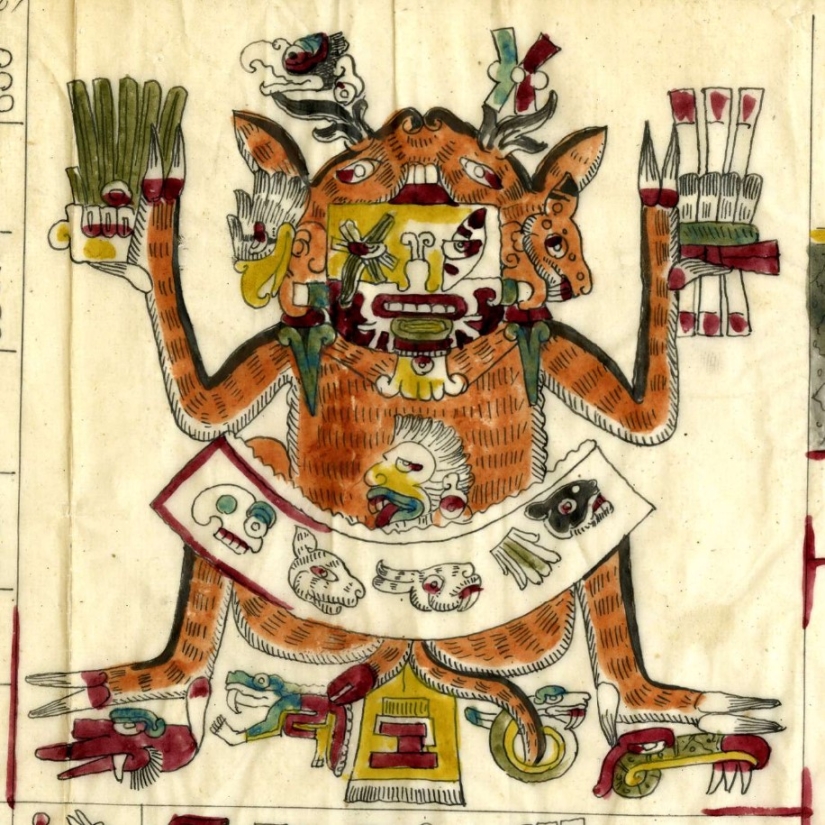The Aztec god Xochipilli turned out to be the patron saint of vices and drug addiction
If the ancient gods had a rather narrow specialization, then the American ones were famous for their diverse interests. The Aztecs, Mayans and Incas did not have deities responsible separately for wisdom, military prowess or trade. Their celestials took on a variety of ventures, sometimes not quite compatible. The Aztec god Xochipilli, whose name translates as "prince of flowers", has been considered a respectable patron of lovers, artists and farmers for several centuries. But over time it became clear that he was also responsible for some piquant areas of life.

The Aztecs, who once densely inhabited Central Mexico, inherited the cult of Xochipilli from the Toltecs. This people lived on their lands from the 8th to the 12th century and disappeared under the onslaught of militant neighbors. The Aztecs highly valued this god, built temples to him and organized holidays. The main one was accompanied by days of festivities and ended with human sacrifices.

The Indians considered Xochipilli a patron of flowers, arts and a responsible figure for fertility. Of course, there were also lovers under his patronage, and even same-sex ones. Images of this god are very common in Mexico and they are often found during archaeological excavations. At the beginning of the 19th century, another statuette of the Indian "Saint Valentine" was found on the slope of the Popocatepetl volcano. It was dated to the 16th century, turned over in their hands and sent to the museum.

It was only recently that scientists got their hands on this idol, waiting in the wings at the National Anthropological Museum in Mexico City. The figure of Xochipilli sits cross-legged on an elaborately decorated pedestal. His arms are bent at the elbows, and his face is directed upwards. Everyone was sure that he was casting a spell, communicating with spirits, meditating or performing some other sacred action.

After studying the figure, scientists were able to explain his pose more prosaically. In their opinion, Xochipilli is simply under the influence of narcotic substances, possibly hallucinogenic mushrooms. This idea was suggested to researchers by images on the body of the deity and on the basis of the sculpture.

On the volcanic stone, the sculptor carved psychedelic mushrooms, most likely Psilocybe mexicana or Psilocybe aztecorum. The Aztecs called them "the flesh of the gods" and used them to "expand consciousness" during cult events. In addition to mushrooms, on the pedestal you can see an image of tobacco and heimia — a plant containing a strong alkaloid that acts as a tranquilizer. The third plant could not be identified. But, judging by the rest, it is also not quite simple.

After this discovery, everyone remembered Xochipilli. They even got the hypothesis from the archives that he was worshipped by patolli players. This gambling game was a real scourge of Aztec families, worse than modern slot machines. The Indians played it so enthusiastically that they spent not only all their money and supplies, but also houses, wives and even their freedom.

Scientists had to go to dusty vaults and extract ancient primary sources. In ancient chronicles there are descriptions of the festival dedicated to the "Prince of Flowers". They were carefully re-read, and everything fell into place. During the events held in the square near the Xochipilli Temple, the Aztecs went all out. They used mushrooms, herbal drugs and alcohol. Prostitution and just rampant debauchery were also encouraged on holidays.
Recent articles

Sometimes, just one clever angle is enough to turn an ordinary shot into a puzzle. This collection features 22 photos where ...

The history of the Blanchard family happened back in 2015, but it is still being talked about. The brutal murder of Dee Dee ...

Oscar Wilde once said, "Life imitates art even more than art imitates life." And after viewing the photos that we have collected ...